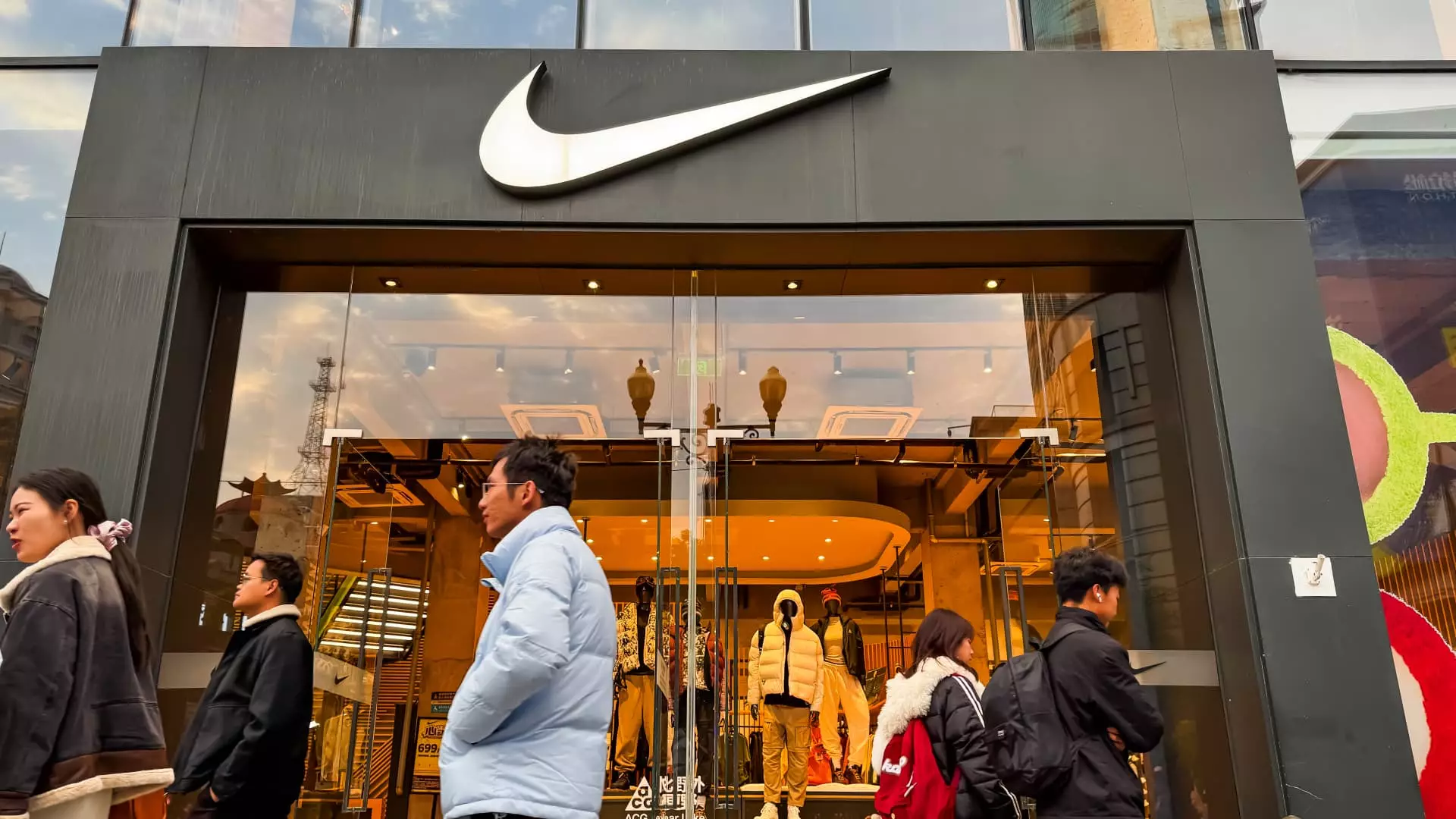As corporate America grapples with the repercussions of fluctuating consumer confidence and mounting inflation, Nike, the titan of athletic wear, has issued a troubling warning of a double-digit decline in sales for its current fiscal quarter. The information, disclosed during a recent conference call by CFO Matt Friend, is a far cry from the optimistic forecasts that had once buoyed the company’s stock. Projecting sales to dwindle into the low mid-teens percentage range, along with a gross margin contraction between 4-5 percentage points, speaks volumes about the challenges ahead for a brand that has historically been a paragon of resilience.
Nike’s struggles were not merely the result of internal missteps; they have become a microcosm of the broader economic malaise. With the introduction of new tariffs and a shaky international market, Nike executives face an uphill battle in reversing this momentum. The company’s ambitious plans, termed “win now,” are projecting to be more of a slow crawl than the decisive sprint that investors had hoped for. In a world where rapid adaptation is the key to survival, Nike appears to be lagging behind, clinging to outdated strategies amidst a sea of competitors that threaten to sweep them aside.
External Headwinds: A Perfect Storm of Economic Challenges
The company’s warning isn’t just an isolated incident but indicative of a turbulent economic environment. An inflationary landscape has eroded consumer confidence, pushing discretionary spending further down the list of priorities. As consumers tighten their belts, luxury items like new sneakers are often the first casualties. In acknowledgment of these challenges, Nike’s leadership, along with President Donald Trump’s newly established tariffs, have compounded the pressure on profit margins. With around 24% of Nike’s suppliers based in China, the fallout from tariffs could yield far-reaching implications for the brand’s financial health.
The sentiments echoed by the company’s leadership in the most recent earnings call reveal a business grappling with its relevance and position in a fast-evolving market. This isn’t merely about numbers; it’s about reading the cultural and economic shifts that consumers are experiencing. When a brand synonymous with innovation falls into the doldrums of economic disinterest, it’s a chilling reminder that even the giants can be brought low.
Innovation: The Lifeblood of Brand Revival
While there is a tendency for the financial world to hone in on immediate sales figures, the health of a brand ultimately lies in its ability to innovate. Nike’s recent financials indicate a duality: despite falling sales, the brand has managed to beat earnings estimates, partially buoyed by efforts to rejuvenate its product lineup. Is this innovation enough, however, to stave off the encroaching tide of competitors and consumer indifference?
CEO Elliott Hill’s ambitious strategy involves courting wholesale partners and igniting new avenues of creativity. The introduction of partnerships like the collaboration with Kim Kardashian’s Skims brand signifies a willingness to pivot and adapt, particularly in appealing to the female consumer market. Yet, whether such initiatives will materialize into sustainable revenue growth remains to be seen. The product cycles must be swift and striking to reignite enthusiasm among an increasingly discerning consumer base.
Consumer Insight: The Shifting Landscape
The downward shift in consumer spending is more than a statistical blip; it represents a significant change in attitude. Transitioning into a post-pandemic economy has altered the landscape for discretionary items like footwear. While previously robust sectors within retail seemed somewhat insulated, reports indicate that even the most resilient players are facing scrutiny over continued consumer interest.
As Nike navigates these turbulent waters, it must confront an interesting paradox. Though the company has historically enjoyed a rapport built on brand loyalty, today’s consumers are increasingly empowered and discerning. Gone are the days when a swoosh alone could guarantee sales. Authentic engagement, social responsibility, and meaningful partnerships are now table stakes in the battle for consumer hearts and wallets.
The Road Ahead: A Treacherous Path
When analyzing Nike’s precarious position, the stakes are undeniably high. The company is at a crossroads, tasked with overcoming internal roadblocks while also contending with external political and economic forces. The dual focus on revamping product lines and navigating consumer sentiment becomes paramount in this pivotal moment.
Nike’s future success hinges on whether it can blend innovation with swift adaptation to prevailing market trends. The collective anxiety regarding sales forecasts isn’t merely a financial concern; it’s a broader commentary on the brand’s relevance in an era defined by rapid change and evolving consumer expectations. As the company attempts to turn the tide, failure to convincingly address these challenges may not only jeopardize its market share but also alter the broader landscape of athletic retail, forcing stakeholders to rethink their understanding of desirability and brand loyalty.

